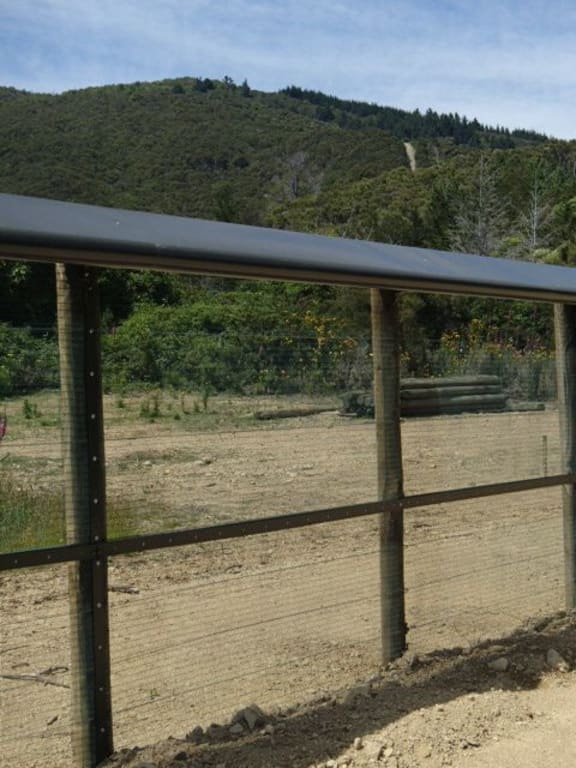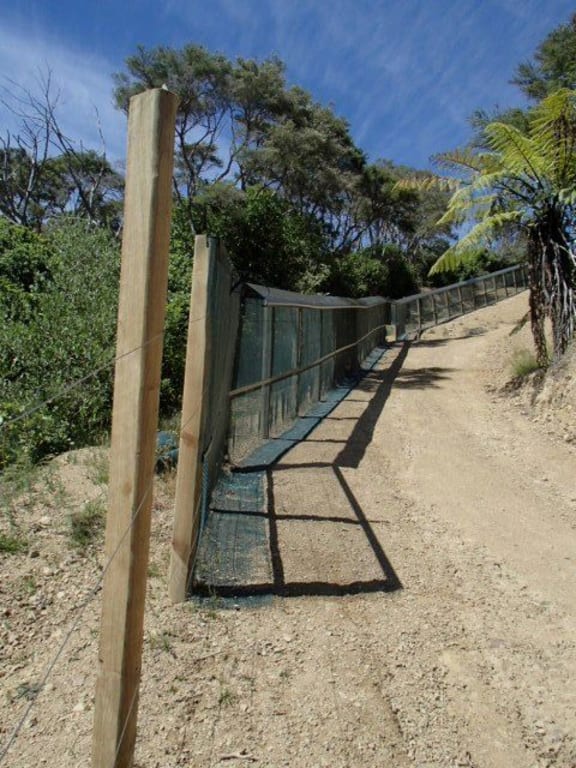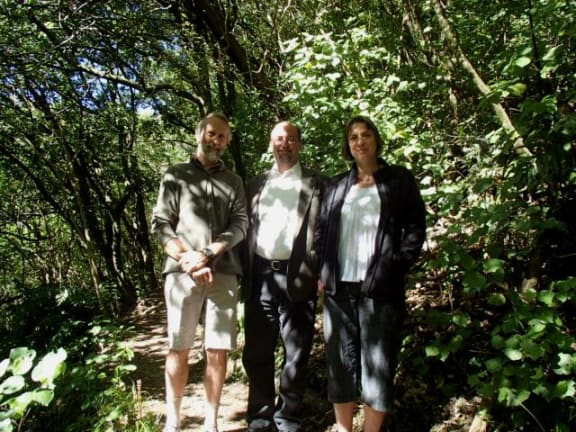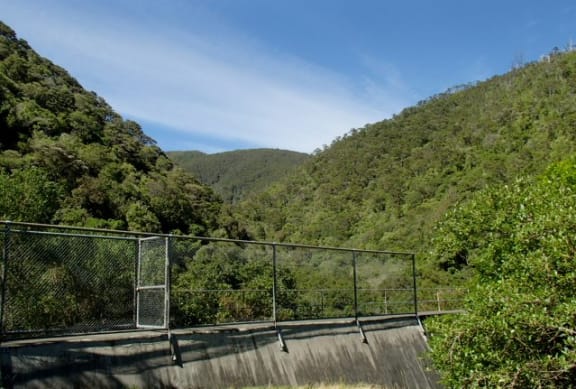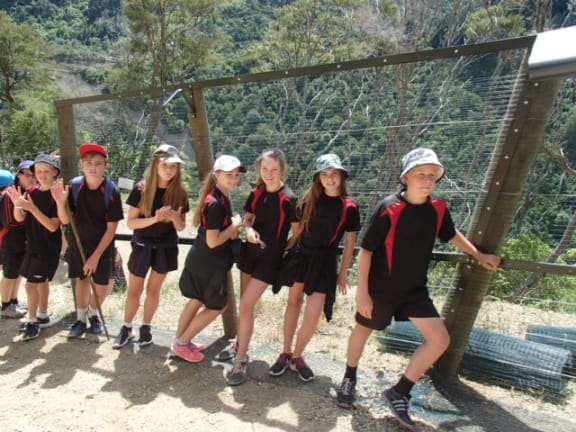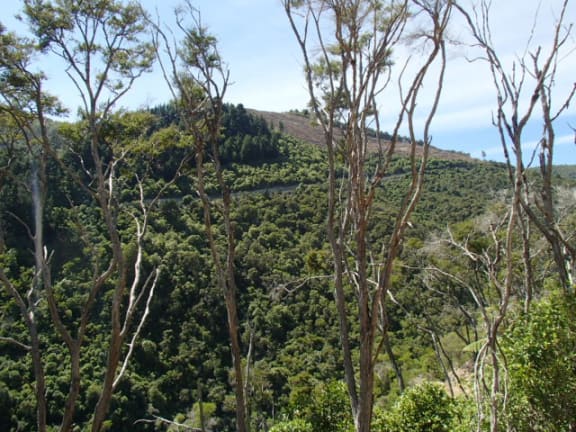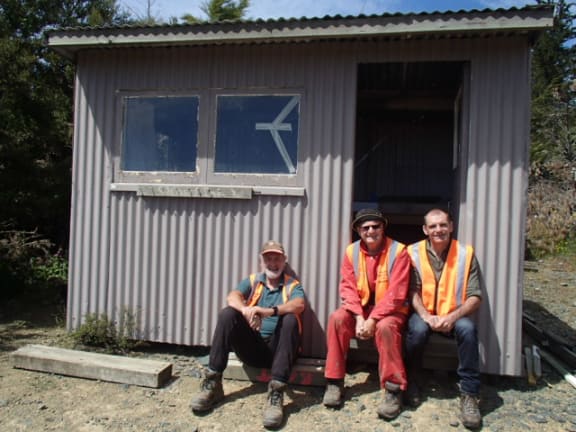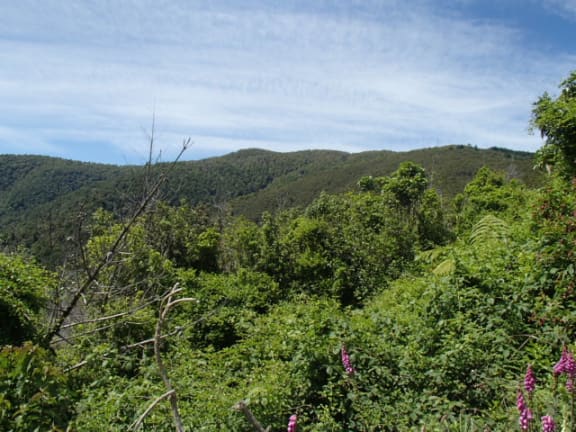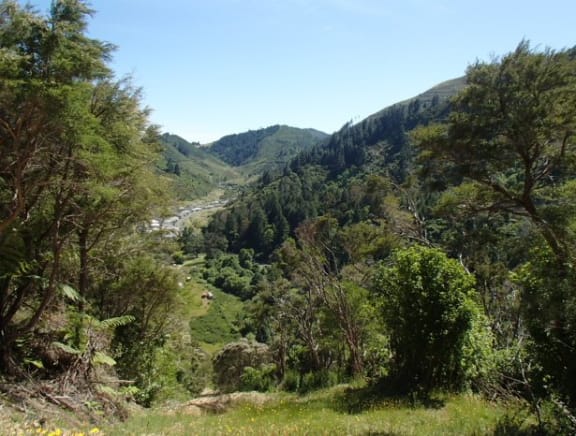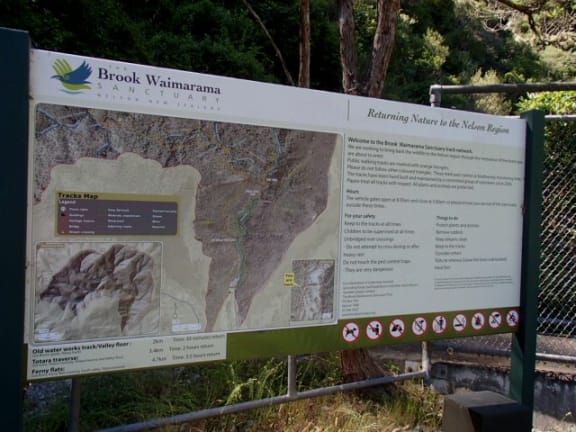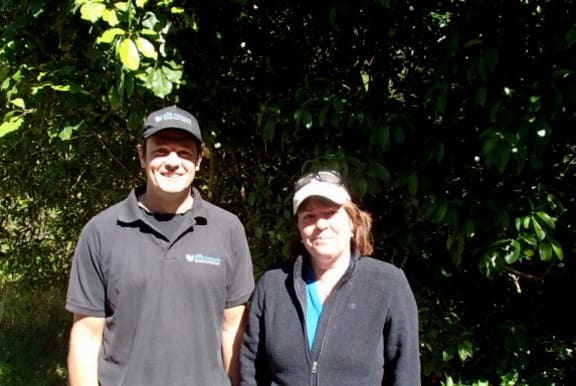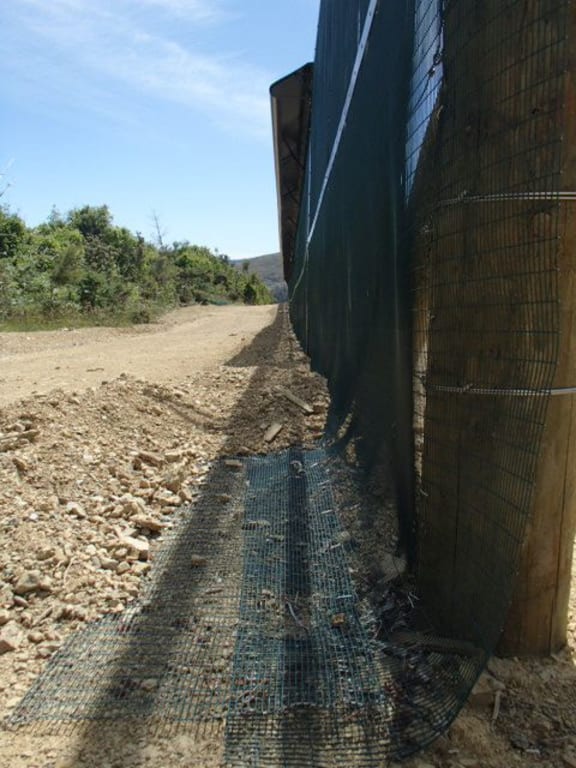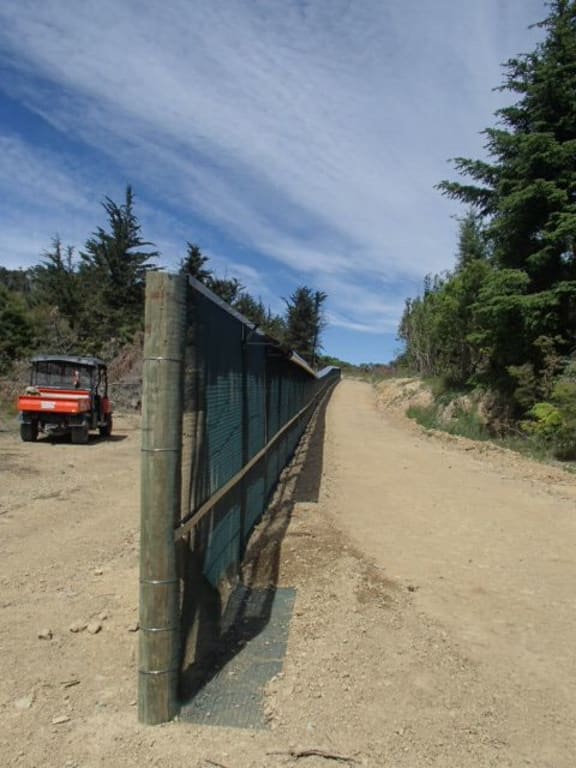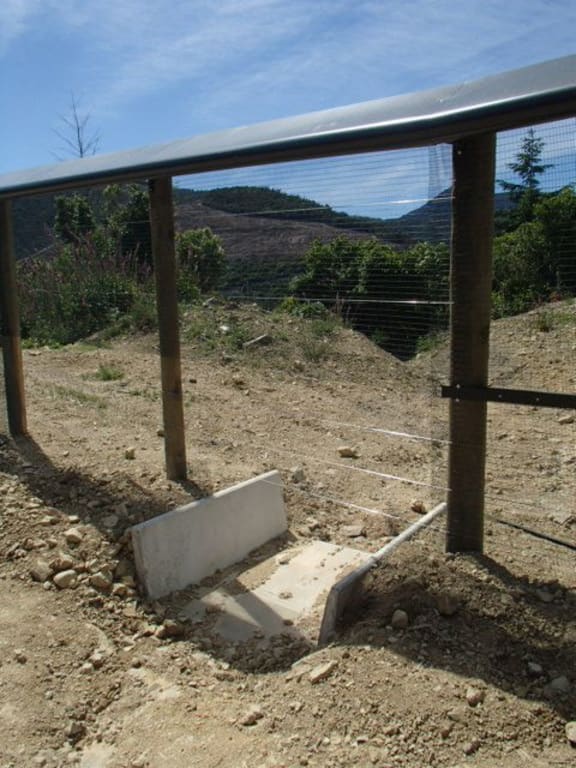“This pest-proof fence has to repel the strongest pig and it also has to repel the cleverest mouse.”
Jim Livingstone, Operations Manager, Brook Waimarama Sanctuary
Building a 14.5 kilometre-long predator-proof fence at the Brook Waimarama Sanctuary
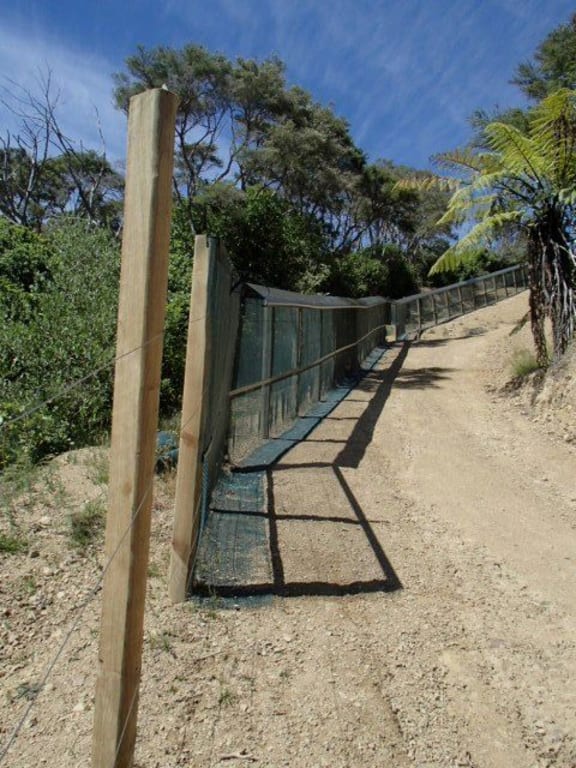
The predator-proof fence is made of more than 7000 fence posts, and a tight woven mesh that is designed to prevent even small mice getting through. Photo: RNZ / Alison Ballance
The pest-proof fence that rings the Brook Waimarama Sanctuary is no ordinary fence. More than 2 metres high and 14.5 kilometres-long, it has taken more than 7000 fence posts spaced at 2-metre intervals to provide a firm attachment for the tightly woven mesh which has a gap size of just 5 by 25 millimetres, “fine enough to keep out even a young mouse.”
A wide skirt that fans out from the base of the fence is designed to prevent animal intruders digging their way underneath, while a slippery metal hood along the top of the fence will foil even the most determined climber.
When the sanctuary fence is finished in autumn 2016 a new regime of twice-weekly fence checks will begin, to ensure that its defences can’t be breached.
It has taken 14 years since the idea of creating a pest-free sanctuary on the outskirts of Nelson was first suggested, and while it has been a long haul the Brook Waimarama Sanctuary trust chair David Butler is delighted to have got to this point.
He first dreamed of the beech forest sanctuary when he was working on the Department of Conservation’s mainland island at Lake Rotoiti in Nelson Lakes National Park. The mainland island is not fenced, and David had experienced first-hand the difficulty of keeping pest numbers down, despite lots of trapping and poisoning.
After seeing the early success of Zealandia Sanctuary in Wellington, David and other Nelson conservationists began to think about creating a similar sanctuary close to Nelson city so that people would have easy access, and so that wildlife from the sanctuary could spill over into surrounding parks and gardens.
‘Returning nature to Nelson’ became their catch cry.
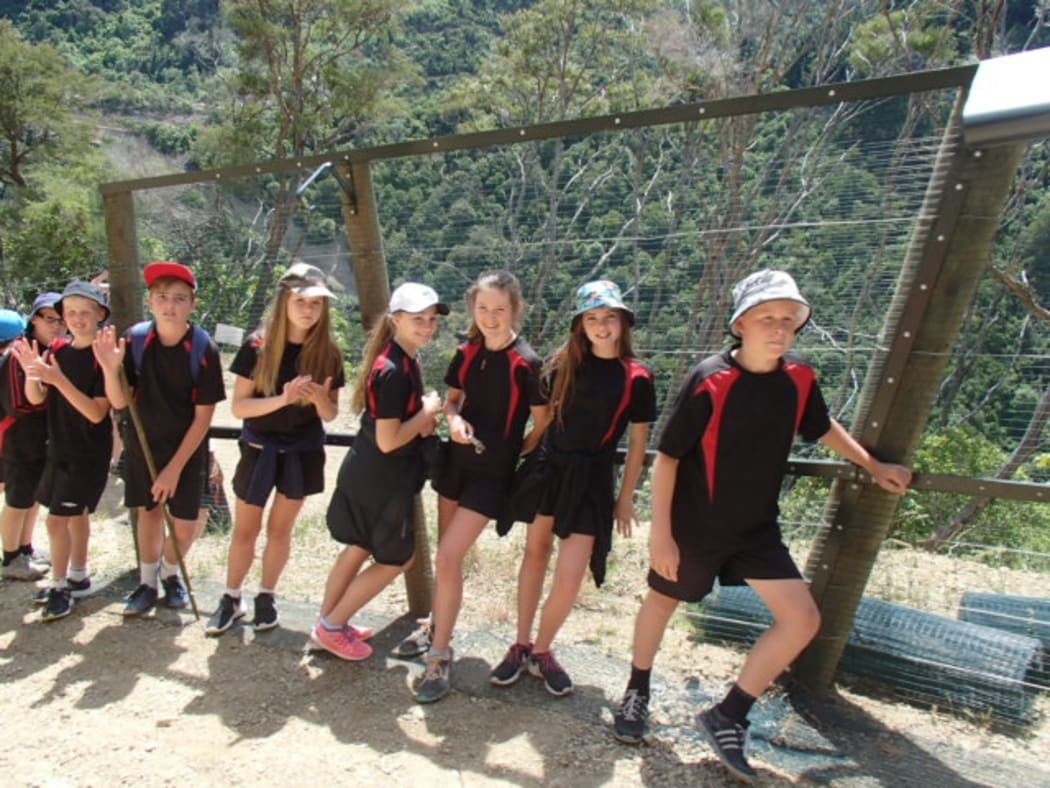
The Brook Waimarama Sanctuary Trust plans to expand its popular education programme, and have a forest classroom that includes a broadband connection to allow groups such as this class from Waimea Intermediate to use the latest technology in their conservation studies. Photo: RNZ / Alison Ballance
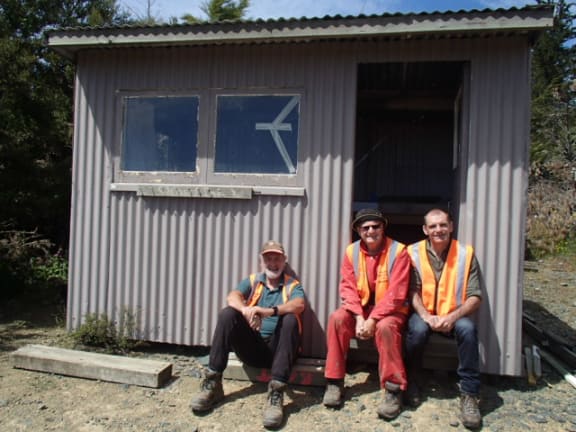
More than 500 volunteers, such as Dave Garnett and Alistair Corner, pictured here with operations manager Jim Livingstone, give their time at the Brook Waimarama Sanctuary to help out with everything from trapping to maintenance. Photo: RNZ / Alison Ballance
The Brook Waimarama Sanctuary Trust chose the Brook Valley, which was a retired water catchment that contained pristine and regenerating forest. It had the benefit of just one owner – Nelson City Council – and it wasn’t long before hundreds of volunteers were joining in to begin track building and animal control.
Since 2007 more than 30,000 pest animals have already been trapped and removed from the sanctuary, from a list that includes red and fallow deer, goats, feral cats and hedgehogs, as well as mice, rats, possums and stoats.
There is now more than 100 kilometres of tracks, including public and trapping tracks, the Trust has raised $4.7-million dollars to build the fence, and it is currently seeking resource consents to carry out an aerial drop of brodifacoum anti-coagulant baits inside the fence to kill off the remaining rats, mice, possums and stoats.
The sanctuary encompasses a steep-sided valley that is more than 600 metres in elevation at its highest point.
Bird monitoring co-oordinator Katherine Chamberlain says she loves being in the forest.
“It’s beautiful. You don’t have to go far and you feel like you’re in the forest primeval.”
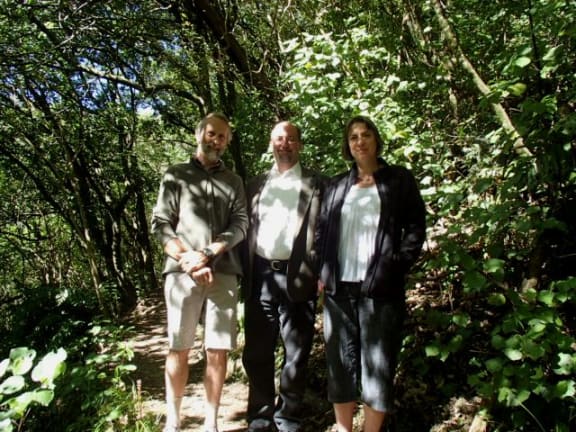
David Butler, Hudson Dodd and Katherine Chamberlain stand in dappled sunlight falling through the tall forest canopy on the valley floor. They are all looking forward to seeing the wildlife return to the valley when the fence is completed and pests are removed. Photo: RNZ / Alison Ballance
David and other staff and volunteers are looking forward to seeing wildlife in the sanctuary blossom. Regular bird monitoring inside and outside the sanctuary has already shown that bellbird and weka numbers have taken off in the city, and they hope that kaka and other rare birds will soon be joining them.
The sanctuary has plans to reintroduce rare birds such as saddleback, kiwi and seabirds, as well as insects such as giant weta and reptiles such as tuatara.
Katherine says that she is looking forward to hearing birds that she’s never heard before and seeing rifleman everywhere.
Trust general manager Hudson Dodd says he is “looking forward to a community asset that is beloved by folks in the region and is on everyone’s shortlist of what to do with friends and family when you come to sunny Nelson.”
David says he is especially looking forward to the seabirds returning.
“That wonderful experience of being on an offshore island at night, and a rain of birds crashing through the trees … and then what that brings, all the droppings coming ashore which leads to a diverse invertebrate population which leads then to lots of lizards and tuatara. It’s the seabirds for me.”
The Brook Waimarama Sanctuary will be the largest public fenced sanctuary in the South Island, and the only New Zealand sanctuary in beech forest.
Orokonui Ecosanctuary near Dunedin has featured on Our Changing World, and we have also featured a number of stories from Zealandia, including the recent spotted skink translocation.
